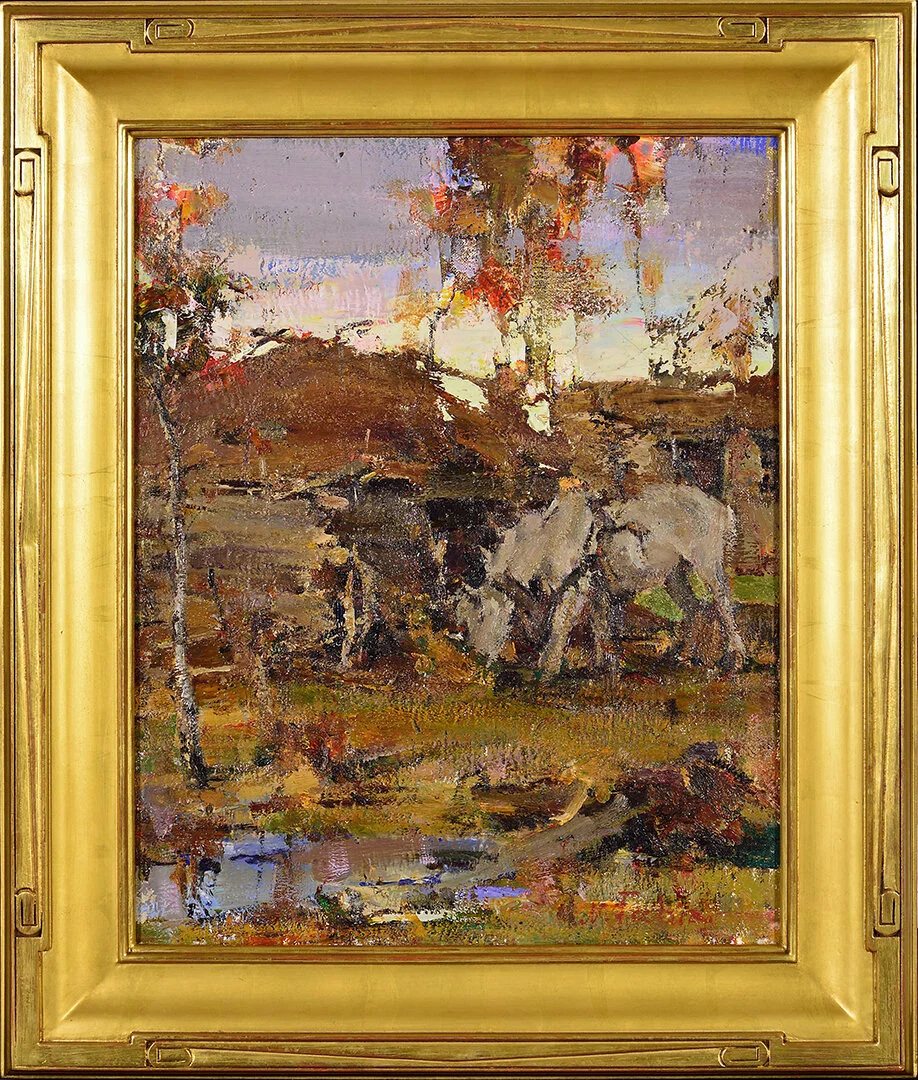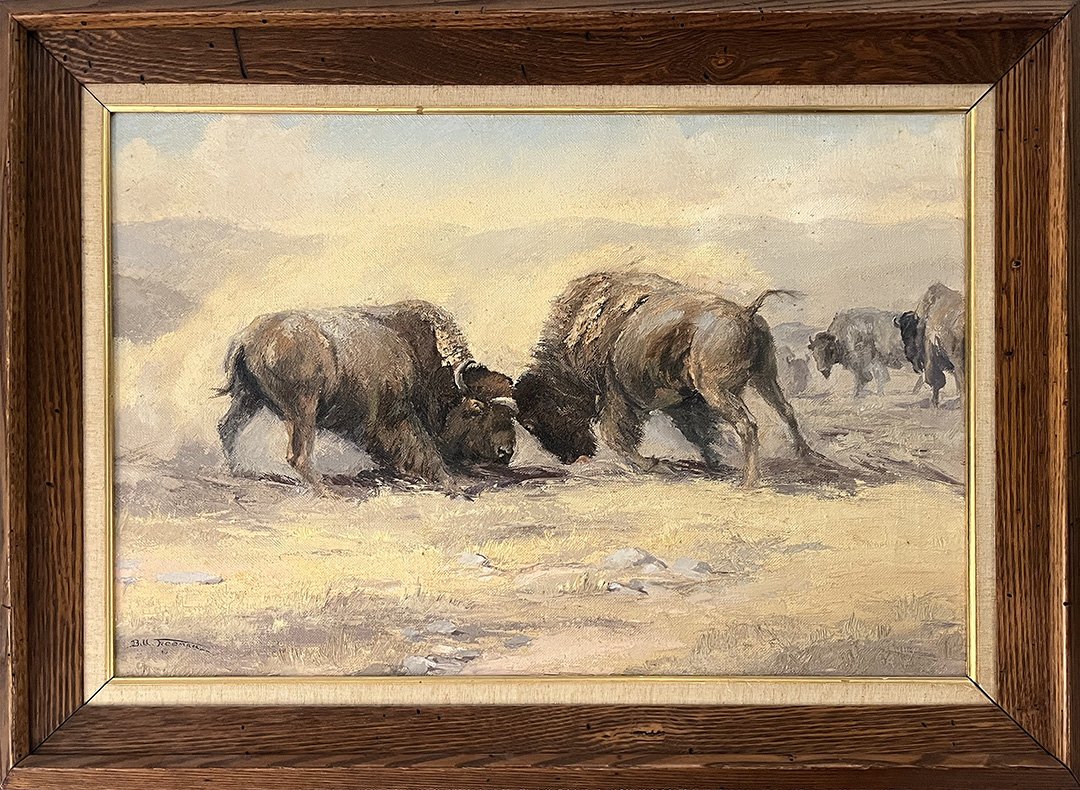Henry Farny
Henry Farny
Along the Creek, 1902
Gouache
11 3/4 x 8 1/2 inches
Signed Lower Right
ID: DH2609
Originally from Ribeauville, France, Henry Francois Farny’s first exposure to Native Americans was the Senecas, a tribe of the Iroquois Nation that lived near his childhood home in western Pennsylvania. Around 1859, the Farny family moved to Cincinnati, Ohio. Attracted by painting and drawing, the young man became an illustrator for magazines and books for children. When he was 18 years old, Harper’s Weekly published a double page view of Cincinnati he made. Over the next ten years, he went abroad three times, studying in Rome, Dusseldorf and Munich. On the last trip, he was accompanied by fellow Cincinnatians Frank Duveneck and John Twachtman.
Farny’s interest in Indians eventually developed into a lifelong pursuit, which included several trips to the West and an intimate knowledge of the tribes of the American frontier. He learned two Indian languages and was adopted by the Senecas, the Sioux, the Blackfeet and the Zuni. Throughout his career he had remarkable encounters with historical figures and events: Farny introduced Sitting Bull to General Ulysses S. Grant in 1883, he sketched Geronimo, he was a friend of Theodore Roosevelt, and he witnessed firsthand the Ghost Dance of the Sioux, from which he created a number of drawings that were widely reproduced.
A contemporary of Frederic Remington and Charles Russell, Farny’s paintings were not glorified images of the Wild West. Instead, he created intimate, realistic depictions of Native Americans, their customs, and their disappearing way of life. Farny documented tribal life in numerous sketches, drawings, and photographs, and he collected a large number of Indian artifacts, which he brought back to his studio in Cincinnati and used as the basis for his paintings.
The typical Farny style can be categorized by an almost photographic exactitude of detail, deliberate and precise modeling, and a carefully worked sense of composition. Every detail is intensified by its clarity; every nuance of color is cool and sharp. The alertness and stillness of Farny’s scenes is almost palpable; the mood of expectation has been heightened by the artist’s crackling realism.
Henry Farny’s paintings hang in numerous important art institutions, including the Smithsonian American Art Museum, Washington, D.C.; Cincinnati art Museum and the Butler Institute of American Art, Ohio; Denver Art Museum and the American Museum of Western Art, Colorado; Phoenix Art Museum, Arizona; Fine Arts Museum of San Francisco, California; and the Gilcrease Museum and the Woolaroc Museum, Oklahoma.
“The nation owes you [Farny] a great debt. It does not realize now, but it will someday. You are preserving for future generations phases of American history that are rapidly passing away.”
Theodore Roosevelt




